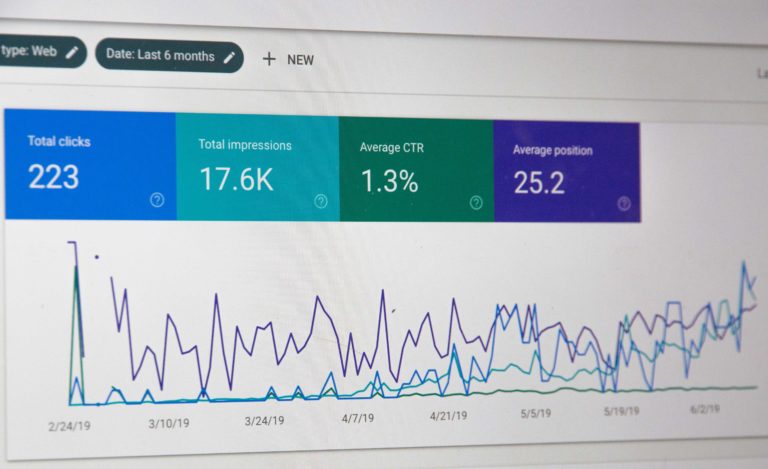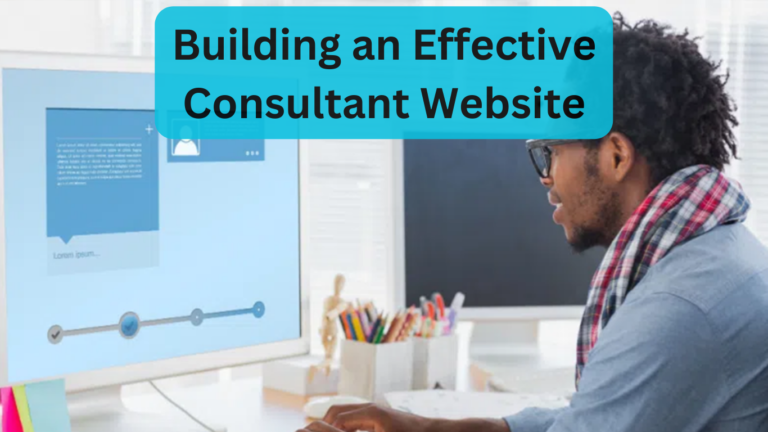Crafting the Perfect Church Website:
Having a quality website is more important than ever for churches in this era. With most people accessing information online, a church’s website is often the first impression and main source of information for potential new members. An outdated or poorly designed website can actually deter people from visiting your church.
That’s why it’s essential that churches put thought and effort into creating an effective website that engages visitors, provides key information, and represents their mission and community well. This article will examine the key elements that go into designing a good church website builder today.
Visual Design Matters for Your Church Website
The visual design of your church website including color scheme, fonts, layout, imagery and more can have a significant impact on user engagement and impressions. When someone lands on your site, the visuals they see will greatly influence if they feel compelled to explore further or leave to look elsewhere.
While churches have different aesthetics, some general best practices apply when designing the look and feel of a church site. You want to utilize visual design to create a professional but also welcoming and inviting atmosphere. The color palette and font choices should mesh well with the church’s brand and convey the right tone.
Photography and videos are highly engaging visual elements to incorporate. Images showing worship services, church gatherings, staff, and church grounds can help visitors better understand the culture and community. Stock photos should be avoided as much as possible in favor of real images of your specific church.
Some other visual design tips include:
- Use plenty of white space and avoid clutter
- Make sure text is readable (not too small or low contrast)
- Limit overly flashy or loud design elements
- Create a consistent look across all pages
- Optimize images for fast load times
- Use responsively sized images
The visual experience can make a strong first impression. Take the time to create a church website design you’re proud to showcase.
Ensure Your Church Website is Mobile-Friendly
Have you ever tried to visit a website on your smartphone and struggled to navigate or read the content? This frustrating experience is all too common on sites that are not mobile-friendly.
With Google reporting that over 60% of searches now happen on mobile devices, it’s absolutely essential that your church website is designed for mobile user experience. If your site is difficult to use on smartphones and tablets, you are likely losing connections and engagement.
Some key elements of effective mobile website design include:
- A responsive layout that adapts to fit small screens
- Tap-friendly navigation and call-to-action buttons
- Legible typography suited for small formats
- Streamlined information architecture
- Flexible multimedia content
- Fast image loading times
- Minimal horizontal scrolling
There are a number of free tools you can use to audit the mobile-readiness of your church website, such as Google Search Console and Google Lighthouse. Run tests on pages and identify any issues impacting site speed or usability. Be sure to actually view the site on mobile to test for responsiveness.
As more churchgoers access information on the go, making your website mobile-friendly boosts connections, engagement and your brand’s credibility.
Content Should Be Focused on the Visitor
The content on your church website needs to be created with visitors in mind, not just for church staff and members. Remember that a first-time visitor is evaluating if your church seems like the right fit for their spiritual needs.
Every page should be examining the question – what would a visitor find helpful here? The copy and messaging should speak directly to the interests and concerns of someone new to your community.
Some tips for optimizing website content for visitors include:
- Have a dedicated “New Visitors” page detailing what a first-timer can expect. Go over logistics like parking, service times, dress code etc.
- On your “About Us” page, include your church’s origin story and highlights that make your mission unique. However, avoid using too much “insider” language that outsiders wouldn’t connect with.
- Make sure service and event details are clear. List the types of programs offered for different age groups and demographics.
- Use warm, welcoming language and avoid terms or descriptions that could sound excluding to newcomers.
- Include photos and bios for church leaders and staff that visitors may interact with.
- Add relevant FAQs that address visitor concerns like dress code, denomination, theological beliefs, etc.
- Provide multiple clear calls-to-action for getting connected, whether that’s signing up for a newsletter, contacting the church, or attending an upcoming event.
Remember, not all visitors will immediately feel comfortable reaching out. Craft website content that answers their questions and shows why your church community is worth getting involved in.
Keep Your Website Content Current
Few things undermine the credibility and appeal of a church website faster than outdated content. Stumbling upon old event announcements, expired contact info, or last year’s sermon archive implies poor site maintenance.
To demonstrate an active, living church community, it’s important to keep your website content current across all pages and sections. This means:
- Reviewing homepage content quarterly and updating pastor welcome messages, featured events/programs etc.
- Maintaining an up-to-date staff directory with photos, bios and contact info. Remove staff that are no longer there.
- Refreshing “About Us” page content when the church has big milestones, launches new ministries etc.
- Keeping calendar listings, announcements and event details current. Remove old event posts.
- Adding new sermon recordings or other media content weekly/monthly as available.
- Updating location info/maps if service times or venues change.
- Republishing blog posts and news stories as they occur to showcase fresh content.
- Changing out dated photos to show recent church activities and attendees.
To stay on top of changes, assign team members to oversee the site content for their department and empower staff to publish directly with a CMS. Also, implement a review and refresh process as part of your annual planning.
An outdated website reflects poorly on a church, while fresh, engaging content shows vibrant community. Make a habit of keeping things current.
Make Donating and Giving Easy
As a church provides valuable spiritual resources, one important aspect of the website experience is enabling easy donating and giving. Visitors who are moved by your church’s mission should be able to quickly see how to contribute financially.
Some best practices for presenting donation options:
- Have a visible “Give” button/link in the site header or menu that leads to a page with give options.
- List ways to give including online, offering basket, mail-in, stock transfers etc.
- For online giving, embed a giving form or link to your church’s online donation platform. Clearly explain the steps.
- Allow one-time or recurring donation options accommodating all budgets.
- Be transparent about any fees and assure donors that giving is tax deductible.
- Share what donations support – ministries, outreach, operational costs etc.
- Use messaging that isn’t pushy but invites visitors to invest in your mission.
- Provide contact information for any donation-related questions.
- Show donor testimonials and spiritual motivation behind giving.
- Thank donors and celebrate giving milestones to build a culture of generosity.
While never the sole focus, giving and tithing is part of the church experience for many. Present donation options in a welcoming way aligned with your values. Visitors should come away feeling your church has a path for everyone to contribute.
Frequently Asked Question
1. What elements should a good church website include?
A good church website should include essential elements like a welcoming homepage, information about services and events, a contact page, multimedia resources (such as sermons and music), and a clear navigation menu.
2. How important is the website’s design for a church website?
Design is crucial for a church website. It should be clean, visually appealing, and reflect the church’s identity and values. A well-designed site helps visitors feel more welcome and engaged.
3. What content should be featured on the homepage?
The homepage should have a brief introduction to the church, service times, upcoming events, and a warm welcome message. Highlighting recent sermons or inspirational content is also a good practice.
4. Is it important to have an events calendar on the website?
Yes, an events calendar is vital. It keeps members and visitors informed about upcoming activities, special services, and community events.
5. How can we ensure our website is user-friendly for all age groups?
To make the website user-friendly for all age groups, use clear fonts, readable text sizes, and intuitive navigation. Avoid clutter and make sure information is organized logically.
6. Should a church website have an online giving option?
Yes, offering online giving options is convenient for members and encourages regular contributions. Ensure that the payment process is secure and easy to use.
Conclusion
Creating an ideal church website in 2024 requires carefully thinking through visual appeal, user experience, content strategy, and presentation. By focusing on visitor perspectives as you design and write copy, you can craft a site that leaves an engaging first impression.
Remember to showcase the vibrant community and meaningful work happening at your church. Let visitors encounter the welcoming spirit and vision driving your ministry. A quality website builds trust in your brand and removes barriers to participation.
Hopefully this overview provides a helpful starting framework as you reimagine your church’s website. Feel free to reach out if you need any guidance in bringing a new website vision to life! Our team would be happy to offer our tips and insights. With some intentional planning, you can have an effective strategies online hub to complement your in-person community.















